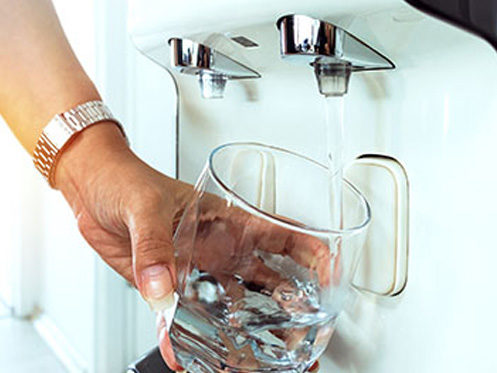Are you looking for ways to help the ecosystem? Maybe you want to save on your monthly bills. In either case, water conservation is a great place to start. There are several everyday tasks that can help to noticeably lower your water consumption.
1. Take Quicker Showers
Showering is sometimes used as a way to relax and wind down. However, if you want to conserve water, you may need to find other relaxation techniques. Typical showerheads use 2.5 gallons of water per minute, and according to Harvard University, the average shower in the United States is approximately 8 minutes long. That comes out to a good 20 gallons of water used, minimum—even more if you spend a while under the spray.
Instead, try to take quick, efficient showers. Whether you set an alarm or use a specific playlist as a timer, choosing something to keep yourself aware of how long you’re in the shower can help you cut down on the time you spend there. Another way to reduce water consumption is to shave before getting into the shower. Choosing to shave while in the shower can add anywhere from 15 to upwards of 30 minutes to your showering time. A few other beneficial showering techniques include:
- Installing a water-efficient showerhead
- Turning the water off while lathering up
- Turning off the water while shampooing your hair
2. Opt for Showers Over Baths
In general, a quick shower uses way less water than a standard bath. In fact, the average bath can require as much as 50 gallons of water, while a shower can use as little as 20 gallons. That means by choosing to shower instead of bathe, your monthly water bill could be cut in half. If completely cutting out baths seems a bit too extreme, you could opt to take a bath once or twice a week instead of daily.
3. Fill the Bathtub Halfway During Baths
If showering just isn’t a suitable option for you, there are still ways you can bathe and save water at the same time. The best way is to only fill your bathtub up halfway and only turn the water on when the drain is closed. Many times, tubs are filled unnecessarily high, leading to water waste and overconsumption. So, if taking a bath is a requirement for you, this method may be your best bet.
4. Replace or Fix Leaky Faucets Regularly
If you’re not careful, leaky faucets can become common and easy to overlook. This is especially true if the leak is small. Unfortunately, even seemingly insignificant leaks can add up over time, costing you hundreds or even thousands of extra dollars over the course of several years. In order to prevent wasteful leaks, you should pay close attention to your faucets and showerheads. Slow leaks of less than 12 drops a minute aren’t really a big deal. On the other hand, faster drips can produce over 100 drops per minute, resulting in more than 300 wasted gallons of water per month. In order to remedy these issues, solicit the help of a professional plumber as soon as you notice any excessive dripping or leakage.
5. Soak Pots and Pans Before Washing Them
Depending on how dirty your pots and pans are after cooking, it may be tempting to run hot water over them to help simplify the scrubbing process. Although this may be effective, this course of action demands a considerable amount of water. Instead, put a small amount of dishwashing liquid into the pot and add some hot water. Let the pot sit for 20 to 30 minutes. After this time, you should be able to easily scrape off the food particles with a standard dish brush or scrubber.
6. Opt for the Dishwasher Over Hand-Washing
Some people opt for hand-washing dishes because they believe it is the optimal option. However, there are studies that have shown that using the dishwasher is much more effective at cleaning dishes and eliminating bacteria. Whichever side of the argument you may fall on, it’s hard to debate that dishwashing is a better option if you’re looking to conserve water.
When you wash dishes by hand, it’s normal to fill the sink up to the halfway mark or even higher. This can account for at least five gallons of water. Then, you have to consider the rinsing process. Many people keep the water running while they are rinsing dishes, causing them to use at least five gallons of additional water. Therefore, a standard hand-washing session can account for at least 10 gallons of water usage. Many newer dishwashers, on the other hand, use about four gallons per wash cycle.
7. Don’t Pre-rinse Dishes Before Dishwashing
If you are an avid dishwasher user, you can save even more water by not pre-rinsing your dishes. This may seem like a far-fetched idea, considering how sticky and dirty some dishes can get. However, because the average detergent is formulated to clean off dried food, pre-rinsing isn’t necessary. Now, this doesn’t mean that you leave lumps of food on your plate. If there are large food particles that can be easily scraped away without water, then feel free to dispose of them before washing. Also remember that this option may not be suitable for dishes that have been sitting for long periods of time. So, if you want to stick to this water-saving routine, it’s best to begin the dishwashing process within 3 days of usage.
8. Only Wash Full Loads in the Dishwasher
In order to decrease water consumption, you should wait until the dishwasher is relatively full to begin the dishwashing process. Of course, the meaning of “full” depends on how often you eat at home and the amount of people you live with. With that being said, “full” refers to the amount of dishes that are usually included in your personal dishwashing routine. Even though modern dishwashers use a standard amount of water, the more cycles you perform, the more water you will end up using. In the end, you could be using just as much water as a hand-washing routine.
9. Wash Clothes in Larger Batches and Wash Less Frequently
Washing full loads of clothing is another effective way to decrease water usage. Whenever possible, try to consolidate your clothing loads into larger batches. Unless you absolutely need a particular article of clothing, opt to wait longer in between washes. Re-wearing barely worn clothes and reusing bath towels are two ways to help facilitate this process. According to the American Cleaning Institute (ACI), jeans, suits, and pajamas can typically be worn up to three to four times before needing to be washed.
At John Henry's Plumbing, Heating, Air, and Electrical, we provide a variety of plumbing services including drains, leak repairs, toilet repairs, septic tank pumping, and water filtration systems. Some of our other services include everything from heating repairs to air conditioning maintenance. If you are anywhere in or around Lincoln, feel free to contact John Henry's Plumbing, Heating, Air, and Electrical to learn more or to schedule an appointment.

